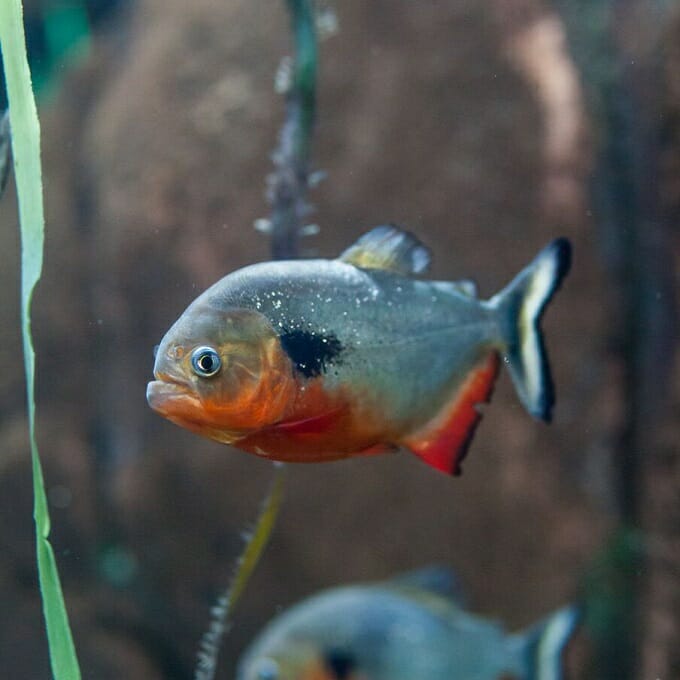-
Size
11 inches (28 cm) -
Diet
Fish, birds, benthic crustaceans, insects, aquatic vegetation -
Range
South America -
Habitat
Tropical freshwater areas
Physical Characteristics
- The upper body of the black spot piranha is silvery grey, while the lower body is red to red-orange, but varies among individuals. There is a black spot behind the operculum.
- Pectoral and anal fins are orange to red and the dorsal fin is black.
- Juveniles have black spots on the upper body.
- This piranha can reach 11 inches (28 cm) in length and about 1.2 lbs. (0.6 kg), with a maximum weight of 5 lbs. (2.3 kg).
- Females are generally larger than males.
Animal Fun Fact
Piranha can replace their razor-sharp teeth when needed.
Diet / Feeding
- Described as “opportunistic generalists”.
- Feeds on fish, birds, benthic crustaceans, insects, aquatic vegetation and terrestrial plant seeds.
- They also attack sick or dying fishes, feed on the fins of larger species, and scavenge carcasses.
Range / Habitat
- A South American freshwater fish found primarily in the Orinoco River basin lowlands and tributaries.
- Prefers warmer waters and stays pelagic (open water).
Reproduction & Growth
- Reproduction in this species is “unrecorded” and not clearly defined.
- Sexually mature individuals exhibit a more-rounded body shape, especially during reproductive periods.
Conservation Status
- “Not Evaluated” on the IUCN Red List.
Additional Information
- Black spot piranha is caught locally for food.
- As with other piranhas, this species has very sharp teeth that can inflict serious bites. It also forms large schools.







